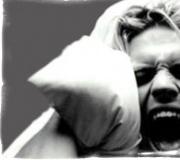Horowitz and Hill. Horowitz Paul, Hill Winfield
Widely known to the reader from previous editions, the monograph by famous American specialists is devoted to the rapidly developing areas of electronics. It presents the most interesting technical solutions, and also analyzes the errors of hardware developers; The reader's attention is focused on the subtle aspects of electronic circuit design and application.Published in Russian in three volumes.
Contents VOLUME-3
Volume 3 contains information on microprocessors, radio circuits, measurement and signal processing techniques, hardware design principles and low-power device design, as well as extensive applications.
For specialists in the field of electronics, automation, computer technology, as well as students
relevant specialties of universities and technical schools.
Title: The Art of Circuit Design. Volume 1-3
Authors: Horowitz P., Hill W.
Publisher: Mir
Year: 1993
Format: PDF
Russian language
Size: 103.2 MB
Download: Horowitz P., Hill W. The Art of Circuit Design. Volume 1-3
If you find broken links, you can leave a comment, and the links will be restored as soon as possible.
Horowitz Paul, Hill Winfield
"The Art of Circuit Design"
(Chapters 1–6)
4th edition revised and expanded
THE ART OF ELECTRONICS
Paul Horowitz Harvard University
Winfield Hill Rowland Institute for Science, Cambridge, Massachusetts
CAMBRIDGE UNIVERSITY PRESS
New York Port Chester Melbourne Sydney
Preface
Carol, Jacob, Misha and Ginger
Translation O.A. Soboleva
Over the past forty years, perhaps more than any other field of technology, electronics has experienced rapid development. In 1980, overcoming doubts, we made the bold decision to create full course teaching the art of circuit design. By “art” we mean mastery of a subject that comes from extensive experience with real circuits and devices, but does not arise from some abstract approach adopted in many electronics textbooks. It goes without saying that when it comes to such a rapidly progressing field, our practical approach is fraught with danger - just as quickly, “fresh” knowledge today can become outdated.
Electronic technology is not slowing down its pace of development! No sooner had the ink dried on the pages of the first edition of our book than the words about the “classic” erasable programmable read-only memory, EPROM type 2716 (2 KB), costing $25, became absurd. The “Classic” disappeared without a trace, giving way to EPROMs whose capacity became larger 64 times, and the cost was halved. The bulk of the corrections in this edition are due to the emergence of new and improved elements and development methods - the chapters on microcomputers and microprocessors (based on the IBM PC and 68008) are completely rewritten, the chapters on digital electronics (including programmable logic devices (PLD) and new logic families of NS and AS), operational amplifiers and developments based on them (which reflects the emergence of excellent operational amplifiers with a field-effect transistor at the input) and design techniques (including CAD/ICS). All tables were revised and some of them underwent significant changes, for example, in table. 4.1 (operational amplifiers) only 65% of the 120 inputs in the table survived, while information on 135 new op-amps was added.
We took advantage of the opportunity that arose in connection with the new publication to respond to the wishes of readers and take into account our own own comments according to the first edition. As a result, the chapter on field-effect transistors (it was too complex) was rewritten and placed in a different place - before the chapter on operational amplifiers (which are all in to a greater extent built on field-effect transistors). Appeared new chapter on the design of low-power and micro-power circuits (analog and digital) is an important topic, but not popular in textbooks. Most of the remaining chapters have been substantially revised. New tables have appeared, including those for analog-to-digital and digital-to-analog converters, digital logic components, low-power devices, and there are more drawings.
Now the book contains 78 tables (they are also published as a separate book called “Tables for selecting Horowitz and Hill components”) and more than 1000 figures.
In reworking the text, we sought to maintain an informal approach that would ensure the success of the book as both a reference book and a textbook. The difficulties faced by a beginner who takes up electronics for the first time are known to everyone: all the issues are complexly intertwined with each other, and there is no such path of knowledge, following which one can step by step overcome the distance from a neophyte to a competent specialist. That's why our textbook has so many cross-references, and we've expanded the book's Guide to laboratory work"and now this is the "Student's Guide" ("Student's Guide to the Course "The Art of Circuit Design", authors T. Hayes And P. Horowitz), supplemented with examples of circuit design, explanations, tasks based on the text of the main textbook, laboratory exercises and answers to problems. Thanks to such an application intended for students, we were able to maintain the brevity of the presentation and the abundance of examples, which was required for those readers who use the book primarily as a reference.
We hope that the new edition meets the requirements of all readers - both students and practicing engineers. Please send your suggestions and comments directly to P. Horowitz at: Physics Department, Harvard University, Cambridge, MA 02138 (Cambridge, MA 02138, Harvard University, Department of Physics, P. Horowitz).
P. Horwitz, W. Hill “The Art of Circuit Design” by Bean, 2014, 706 pp. (31.2 MB pdf)
This is a combined (1 volume and 2 volume) edition of a previously published three-volume book. The book includes the most important materials published in the three-volume edition. The book is tutorial on the development of electronic circuits. The manual provides information on basic electronics ( physical laws and the operation of the main components of the element base), model analogies and layout of circuits of electronic semiconductor devices (transistors and field-effect).
The operation of operational amplifiers, the construction of circuits and detailed analysis their operation, circuits of active filters and generators, as well as voltage stabilizers and power supply circuits. For developers of electronic equipment, material is presented on digital circuits using logic elements and the development of precision circuit solutions. All material in this publication has been revised taking into account modern trends development of radio-electronic element base. At the end of each chapter there are exercises for independent academic work. The new edition meets the requirements of all readers, from students to practicing engineers.
ISBN 978-5-9518-0351-1
CHAPTER 1.
Translation by O. A. Soboleva 8
Introduction 8
Voltage, current and resistance 8
Signals 22
Capacitors and AC Circuits 27
Inductors and transformers 35
Impedance and reactance 36
Diodes and diode circuits 50
Other passive components 61
Additional exercises 66
CHAPTER 2. Transistors
Translation by O. A. Soboleva 68
Introduction 68
Some Basic Transistor Circuits 70
Ebers-Moll model for basic transistor circuits 87
Some types of amplifier stages 99
Some typical transistor circuits 114
Self-explanatory diagrams 116
Additional exercises 120
CHAPTER 3. Field effect transistors
Translation by B. N. Bronya on 121
Introduction 121
Basic circuits using field-effect transistors 132
Keys on field-effect transistors 149
Self-explanatory diagrams 180
CHAPTER 4. Feedback and operational amplifiers
Translation by O. L. Soboleva 181
Introduction 181
Basic circuits for connecting operational amplifiers 184
Kaleidoscope of operational amplifier circuits 190
Detailed analysis of operational amplifiers 196
Detailed analysis of the operation of some operational amplifier circuits 227
Dielectric absorption 233
Operation of an op amp with a single 240 power supply
Comparators and Schmitt trigger 245
Feedback and final gain amplifiers 248
Some typical 255 op amp circuits
Frequency correction of amplifiers with feedback 260
Self-explanatory diagrams 268
Additional exercises 268
CHAPTER 5. Active filters and generators
Translation by M. N. Mikshys 278
Active filters 278
Active filter circuits 288
Generators 300
Self-explanatory diagrams 321
Additional exercises 323
CHAPTER 6. Voltage stabilizers and power supplies
Translation by AJ Korotova 324
Basic circuits of stabilizers based on classic ICs 723 324
Heat Sink Design for Power Circuits 329
Unstabilized power supplies 343
Voltage references 349
Three-terminal and four-terminal stabilizers 360
Special purpose power supplies 389
Self-explanatory diagrams 405
Additional exercises 411
CHAPTER 7. Precision circuits and low noise equipment
Translation by B.N. Bronina 412
Development precision equipment on 412 operational amplifiers
Differential and instrumentation amplifiers 445
Amplifier noise 454
Noise measurement and noise sources 473
Interference: Shielding and Grounding 479
Self-explanatory diagrams 489
Additional exercises 493
CHAPTER 8. Digital circuits
Translation by Yu. V. Chechetkin 495
Basic logical concepts 495
Logic levels 497
TTL and CMOS 507
Combination Logic 515
Sequential Logic 529
Monostable multivibrators 540
Sequential functions implemented on standard 547 ICs
Some typical 567 digital circuits
Pathology in logic circuits 574
Self-explanatory diagrams 580
Additional exercises 583
CHAPTER 9. Interfacing digital and analog signals
Translation by L. V. Pospelov 590
Interfacing CMOS logic and TTL elements 590
Digital signals and long lines 626
An scarlet digital transformation 640
Examples of A/D conversion 664
Phase-locked loop circuits 671
Pseudorandom binary sequences and noise generators 684
Self-explanatory diagrams 697
Additional exercises 700
Annotation
Widely known to the reader from previous editions, the monograph by famous American specialists is devoted to the rapidly developing areas of electronics. It presents the most interesting technical solutions, and also analyzes the errors of hardware developers; The reader's attention is focused on the subtle aspects of electronic circuit design and application.
Published in Russian in three volumes. Volume 1 contains information about circuit elements, transistors, operational amplifiers, active filters, power supplies, field-effect transistors.
For specialists in the field of electronics, automation, computer technology, as well as students of relevant university specialties.
Horowitz, Paul Hill Winfield
Preface
Preface to the first edition
Introduction
Voltage, Current and Resistance
Capacitors and AC circuits
Inductors and transformers
Impedance and reactance
Diodes and diode circuits
Other passive components
Additional exercises
Introduction
Some Basic Transistor Circuits
Ebers-Moll model for basic transistor circuits
Some types of amplifier stages
Some typical transistor circuits
Self-explanatory diagrams
Additional exercises
Introduction
Basic circuits on PT
Keys to PT
Self-explanatory diagrams
Introduction
Basic circuits for connecting operational amplifiers
A kaleidoscope of operational amplifier circuits
Detailed analysis of operational amplifiers
Detailed analysis of the operation of some op-amp circuits
Operating an op-amp with one power supply
Comparators and Schmitt trigger
Feedback and Finite Gain Amplifiers
Some Typical Op-Amp Circuits
Frequency correction of amplifiers with feedback
Self-explanatory diagrams
Additional exercises
Active filters
Active filter circuits
Generators
Self-explanatory diagrams
Additional exercises
Basic circuits of stabilizers based on the classic IC 723
Heat sink design for high-power circuits
Unstabilized power supplies
Voltage references
Three-terminal and four-terminal stabilizers
Special Purpose Power Supplies
Self-explanatory diagrams
Additional exercises
Horowitz Paul, Hill Winfield
"The Art of Circuit Design"
Volume 1
(Chapters 1–6)
4th edition revised and expanded
THE ART OF ELECTRONICS
Paul Horowitz Harvard University
Winfield Hill Rowland Institute for Science, Cambridge, Massachusetts
CAMBRIDGE UNIVERSITY PRESS
New York Port Chester Melbourne Sydney
Preface
Carol, Jacob, Misha and Ginger
Translation O.A. Soboleva
Over the past forty years, perhaps more than any other field of technology, electronics has experienced rapid development. In 1980, overcoming our doubts, we made the bold decision to create a complete course in the art of circuit design. By “art” we mean mastery of a subject that comes from extensive experience with real circuits and devices, but does not arise from some abstract approach adopted in many electronics textbooks. It goes without saying that when it comes to such a rapidly progressing field, our practical approach is fraught with danger - just as quickly, “fresh” knowledge today can become outdated.
Electronic technology is not slowing down its pace of development! No sooner had the ink dried on the pages of the first edition of our book than the words about the “classic” erasable programmable read-only memory, EPROM type 2716 (2 KB), costing $25, became absurd. The “Classic” disappeared without a trace, giving way to EPROMs whose capacity became larger 64 times, and the cost was halved. The bulk of the corrections in this edition are due to the emergence of new and improved elements and development methods - the chapters on microcomputers and microprocessors (based on the IBM PC and 68008) are completely rewritten, the chapters on digital electronics (including programmable logic devices (PLD) and new logic families of NS and AS), operational amplifiers and developments based on them (which reflects the emergence of excellent operational amplifiers with a field-effect transistor at the input) and design techniques (including CAD/ICS). All tables were revised and some of them underwent significant changes, for example, in table. 4.1 (operational amplifiers) only 65% of the 120 inputs in the table survived, while information on 135 new op-amps was added.
We took advantage of the opportunity that arose in connection with the new edition to respond to the wishes of readers and take into account our own comments on the first edition. As a result, the chapter on field-effect transistors (which was too complex) was rewritten and placed in a different place - before the chapter on operational amplifiers (which are increasingly based on field-effect transistors). A new chapter has appeared on the design of low-power and micro-power circuits (analog and digital) - an important topic, but not popular in textbooks. Most of the remaining chapters have been substantially revised. New tables have appeared, including those for analog-to-digital and digital-to-analog converters, digital logic components, low-power devices, and there are more drawings.
Now the book contains 78 tables (they are also published as a separate book called “Tables for selecting Horowitz and Hill components”) and more than 1000 figures.
In reworking the text, we sought to maintain an informal approach that would ensure the success of the book as both a reference book and a textbook. The difficulties faced by a beginner who takes up electronics for the first time are known to everyone: all the issues are complexly intertwined with each other, and there is no such path of knowledge, following which one can step by step overcome the distance from a neophyte to a competent specialist. That's why there are so many cross-references in our textbook, and we've also expanded the Lab Manual into a Student's Guide (Student's Guide to the Circuit Art Course, by T. Hayes And P. Horowitz), supplemented with examples of circuit design, explanations, tasks based on the text of the main textbook, laboratory exercises and answers to problems. Thanks to such an application intended for students, we were able to maintain the brevity of the presentation and the abundance of examples, which was required for those readers who use the book primarily as a reference.
We hope that the new edition meets the requirements of all readers - both students and practicing engineers. Please send your suggestions and comments directly to P. Horowitz at: Physics Department, Harvard University, Cambridge, MA 02138 (Cambridge, MA 02138, Harvard University, Department of Physics, P. Horowitz).




